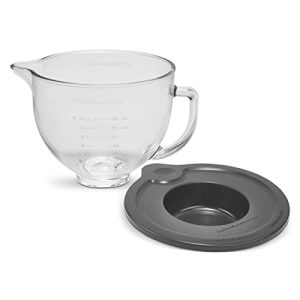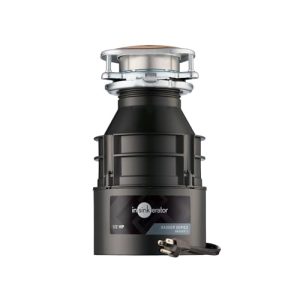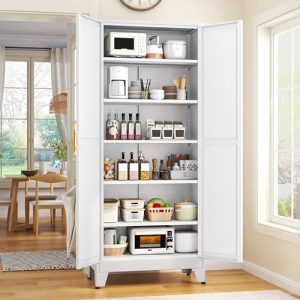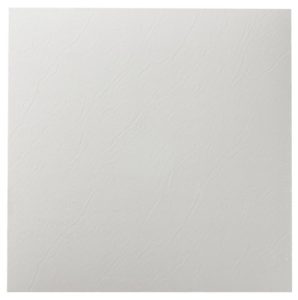Are you staring at that stuck kitchen drawer, wondering how to get it out without breaking anything? Removing a kitchen drawer might seem tricky, but with the right steps, you can do it quickly and safely.
Whether you need to clean, fix, or replace it, knowing how to remove your drawer can save you time and frustration. Keep reading, and you’ll learn simple, clear instructions that anyone can follow—even if you’ve never done it before. Your kitchen upgrade starts here!
Prepare The Drawer
Preparing your kitchen drawer before removal is crucial for a smooth and safe process. Taking the time to clear out the contents and gather the right tools can save you from frustration and potential damage. Have you ever tried to lift a drawer only to have everything spill out unexpectedly? Avoid that by getting ready properly.
Clear Out Contents
Empty the drawer completely. Remove all utensils, spices, or any other items inside to make the drawer lighter and easier to handle.
Check for small objects stuck in the corners or behind the drawer. These can cause problems when you try to pull it out.
Think about where you’ll put these items temporarily. A small box or basket nearby works well to keep everything organized.
Gather Necessary Tools
Before you start, make sure you have basic tools ready. A screwdriver (usually Phillips or flathead) is often needed to undo screws.
Sometimes, you might need pliers or a putty knife to release clips or catches holding the drawer in place.
Having a flashlight can help you see inside the drawer slides or cabinet if the lighting is poor.
Ask yourself: Are your tools within arm’s reach? Preparing them ahead will keep your momentum going without interruptions.
Identify Drawer Type
Before you can remove a kitchen drawer, knowing the type of drawer slide it uses is crucial. Each slide style has its own way of attaching and detaching. Identifying your drawer type saves time and prevents damage to your cabinets and drawers.
Side-mounted Slides
Side-mounted slides are the most common type you’ll find in many kitchens. These slides run along the sides of the drawer and the cabinet. You can usually spot metal rails on both sides when you pull the drawer out.
Removing these drawers often requires you to press levers or tabs on the sides of the slides. Sometimes, you might need to fully extend the drawer and lift it slightly to detach it. Have you noticed small clips on the rails? Those are the key to releasing the drawer smoothly.
Under-mounted Slides
Under-mounted slides are hidden beneath the drawer, offering a cleaner look. These slides support the drawer from the bottom and are common in modern kitchens. When you open the drawer, you won’t see any metal rails on the sides.
To remove a drawer with under-mounted slides, look under the drawer for release levers or tabs. You might need to partially open the drawer and push these levers inward or downward. This type often requires a bit more care because the mechanism is less visible but just as important.
Center-mounted Slides
Center-mounted slides use a single rail running down the middle underneath the drawer. This style is less common but still found in some kitchens. When you open the drawer, you can see a metal rail attached to the center bottom of the drawer.
Removing a center-mounted drawer usually means lifting the drawer off the rail or releasing a locking mechanism near the back. If your drawer feels stuck, check for screws or clips securing it to the rail. Have you checked the center underneath before trying to pull the drawer out?
Release Drawer Mechanism
Kitchen drawers often have release mechanisms hidden under the sides or back. Gently press or lift these catches to slide the drawer out smoothly. This simple action helps remove drawers without damage or force.
Removing a kitchen drawer can seem daunting, but understanding the release drawer mechanism makes it a breeze. This mechanism is your key to effortlessly sliding the drawer out without causing any damage. Let’s dive into the details of how you can safely and efficiently release this mechanism.Locate Release Levers
First, you need to locate the release levers. These are typically found on the sides of the drawer where it meets the track. You’ll usually see them as small plastic or metal tabs. If you’re unsure, remember when you last assembled a piece of furniture—those sneaky tabs are often hidden in plain sight.Press Or Lift Levers
Once you’ve spotted the levers, it’s time to press or lift them. Depending on your drawer model, you might need to either press down or lift up on these levers. Always do this gently to avoid breaking anything. Think of it like adjusting the seat in your car—smooth and steady wins the race.Handle Locking Clips
Some drawers come with locking clips. These clips act as a second line of security to keep the drawer in place. To handle them, pull the drawer out slightly until you can see or feel the clips. Then, gently press or slide them to unlock the drawer. Have you ever unlocked a tricky child-proof cap? It’s a similar concept—just with a touch more patience. By now, you should have a better grasp on how to release the drawer mechanism. Which part did you find most surprising or useful? Don’t hesitate to share your drawer adventures in the comments!Remove The Drawer
Removing a kitchen drawer is simple with the right approach. Focus on handling the drawer carefully to avoid damage. Follow clear steps to pull out the drawer safely. Heavy drawers need extra attention to prevent injury or accidents. This guide explains how to remove the drawer smoothly and safely.
Pull Out Carefully
Open the drawer fully without forcing it. Hold both sides of the drawer firmly. Pull straight out along the tracks to avoid bending. Stop if you feel resistance. Check for any locking clips or screws. Release clips gently to free the drawer. Keep the drawer level to prevent tipping.
Manage Heavy Drawers
Heavy drawers require two hands or extra help. Support the bottom with one hand while pulling with the other. Lift slightly if the drawer feels stuck. Avoid sudden movements to protect your back. Place the drawer on a flat surface once removed. Use gloves if the drawer is rough or has sharp edges.
Troubleshoot Common Issues
Troubleshooting common issues can save time and effort when removing a kitchen drawer. Drawers may not slide out smoothly or get stuck. Identifying the problem helps to fix it quickly. Below are typical issues and how to handle them.
Stuck Drawers
Drawers often get stuck due to dirt or debris in the tracks. Dust and crumbs build up over time. Use a vacuum or brush to clean the tracks thoroughly. Sometimes the drawer is overloaded. Remove some items to reduce weight and ease removal. Gently wiggle the drawer side to side while pulling it out.
Broken Slides
Slides support the drawer and allow it to move smoothly. Broken or damaged slides cause the drawer to jam or fall. Check for cracks or missing parts on the metal or plastic slides. Replace broken slides with new ones matching the size. Secure them firmly to prevent future problems.
Misaligned Tracks
Misaligned tracks cause uneven movement and sticking. Check if the tracks are loose or bent. Tighten any loose screws with a screwdriver. If bent, carefully bend them back into place. Ensure the tracks on both sides line up perfectly for smooth sliding.
Reinstall Or Replace Drawer
Reinstalling or replacing a kitchen drawer requires care to ensure it fits well and works smoothly. Proper alignment and testing are key steps in this process. These steps help avoid damage and make daily use easier.
Align Slides Properly
Place the drawer slides in the correct position on both the drawer and cabinet. Check that the slides are level and parallel. Misaligned slides cause sticking or uneven movement.
Use a screwdriver to tighten screws securely. Loose screws allow the slides to shift and damage the drawer mechanism. Take time to double-check alignment before moving on.
Test Smooth Movement
Push the drawer in and pull it out slowly. Feel for any resistance or sticking points. Smooth movement means the slides are working correctly.
If the drawer feels rough or uneven, adjust the slides slightly. Repeat testing until the drawer moves without trouble. This step ensures long-lasting function and convenience.
Frequently Asked Questions
How Do I Safely Remove A Kitchen Drawer?
To safely remove a kitchen drawer, fully extend it, locate the release clips or levers, and press or lift them. Then, gently pull the drawer out while supporting its base to avoid damage to the slides or the drawer itself.
What Tools Do I Need To Remove A Kitchen Drawer?
Most kitchen drawers can be removed without tools. However, a screwdriver may be needed for screws or brackets. Always check the drawer slides and mounting hardware before starting to ensure you have the correct tools ready.
Can I Remove Drawers Without Damaging The Cabinet?
Yes, you can remove drawers without damage by handling them carefully. Avoid forcing the drawer out and use the release mechanisms properly. Taking your time helps prevent scratches and damage to the slides or cabinet frame.
How Do I Remove A Stuck Kitchen Drawer?
If a drawer is stuck, try gently rocking it side to side while pulling. Check for hidden screws or clips blocking removal. Avoid using excessive force to prevent damage. Lubricating the slides may also help loosen it.
Conclusion
Removing a kitchen drawer is easier than it seems. Follow the steps carefully and take your time. Use the right tools to avoid damage. Check the slides or tracks for any screws or clips. Pull the drawer straight out once it is free.
Clean the area before putting the drawer back or replacing it. This simple task can help you fix or upgrade your kitchen. Try it yourself and save money on repairs. Simple work, great results.

Sophie Hartwell is the founder of KitchenQuik.com, where she shares kitchen tips, smart cooking hacks, and the best product picks to make everyday cooking easier and more enjoyable.




